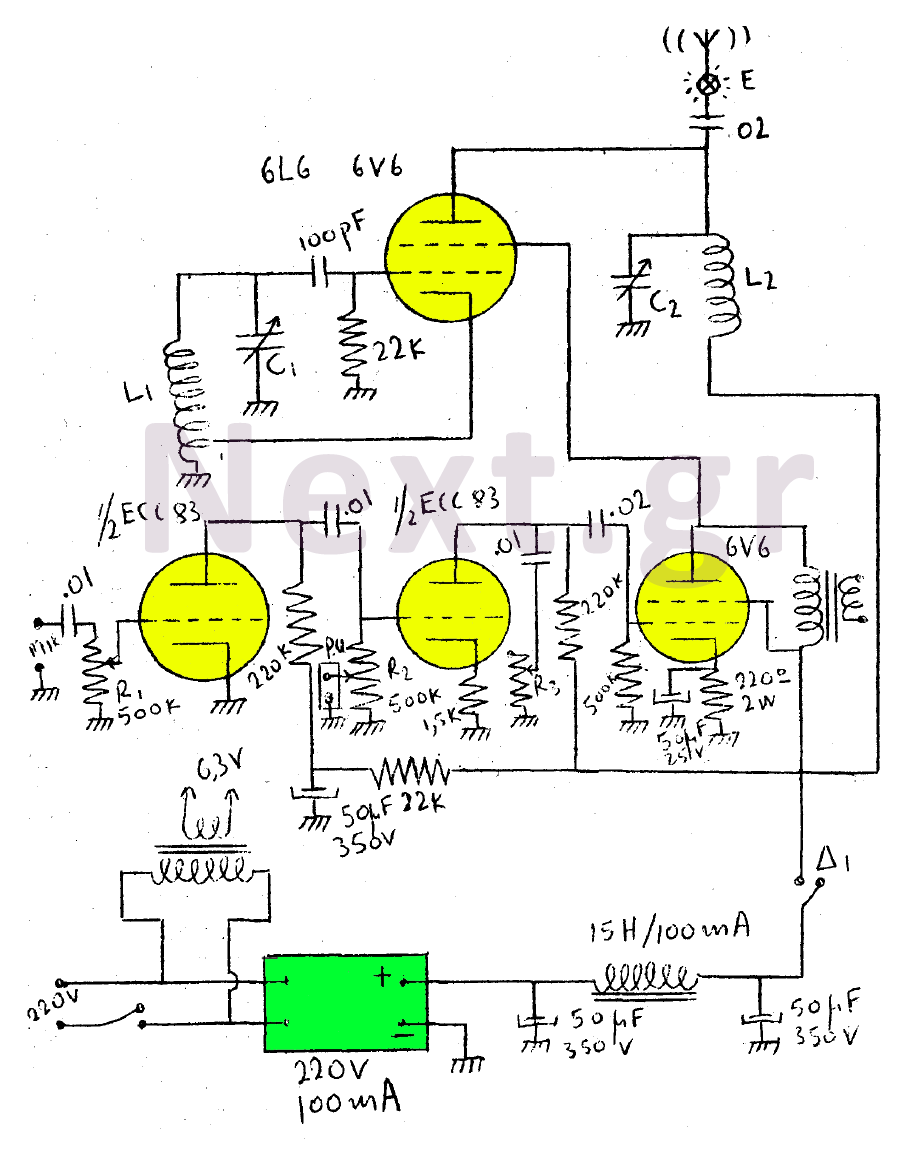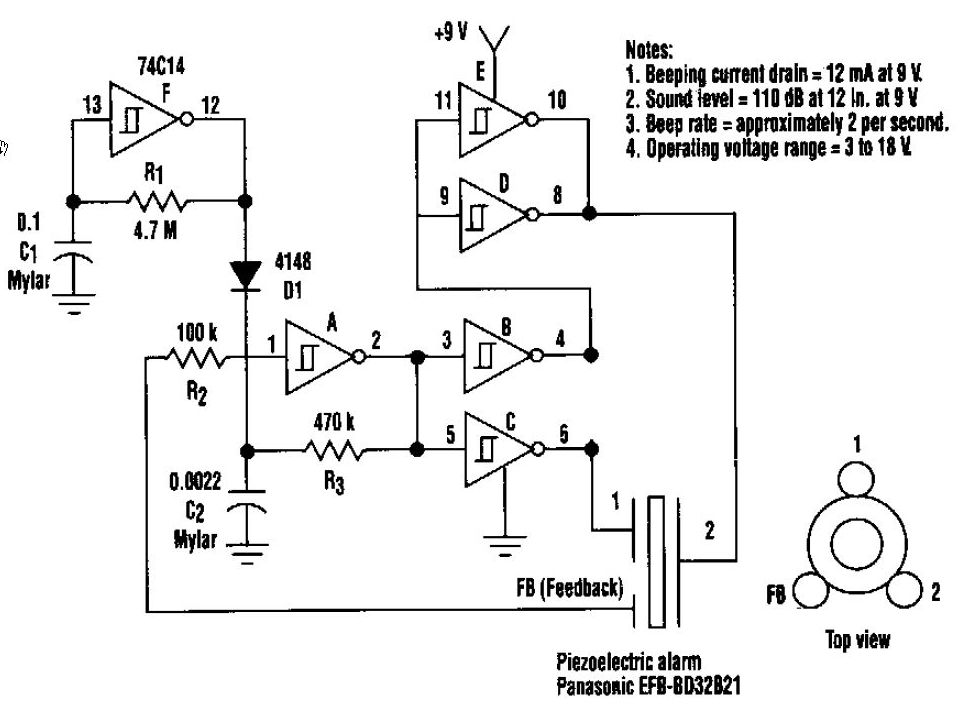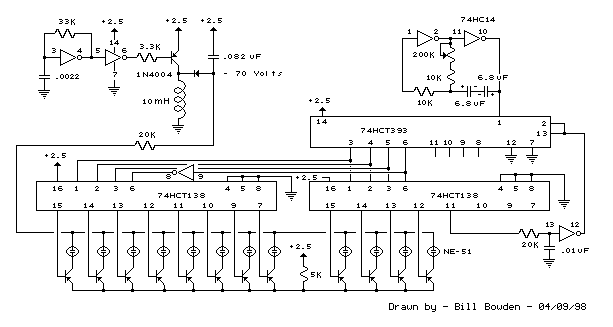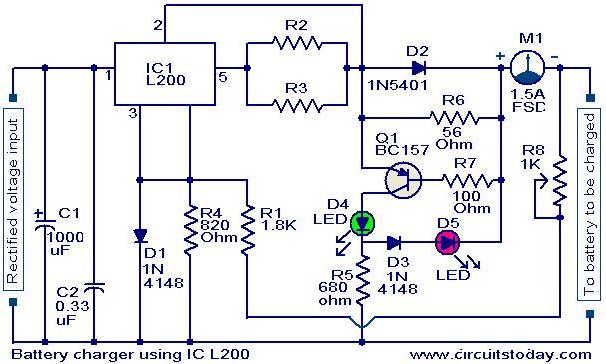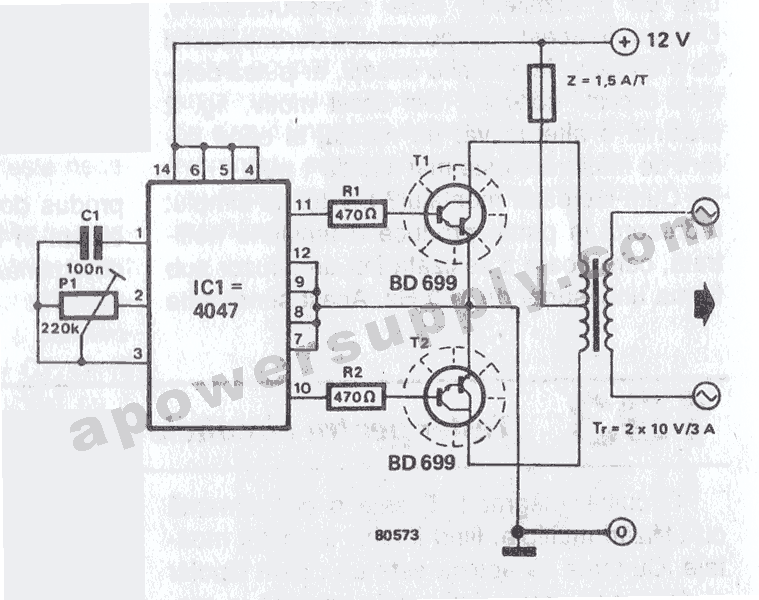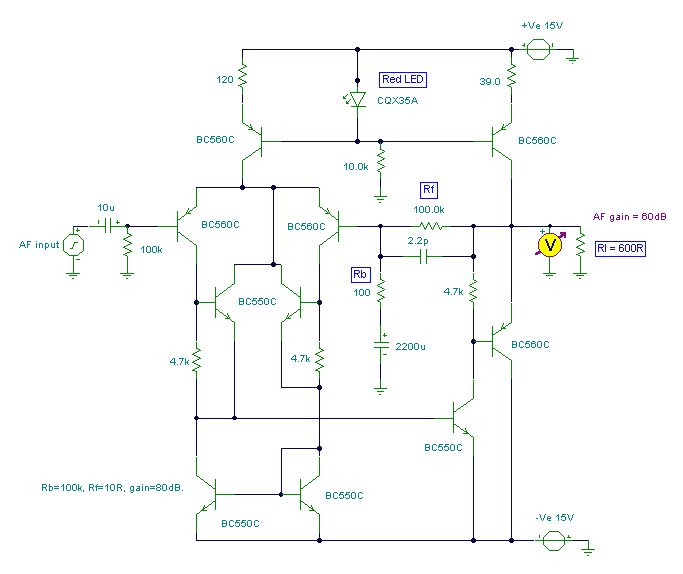
Wideband UHF Amplifier - Antenna TV Amplifier Circuit
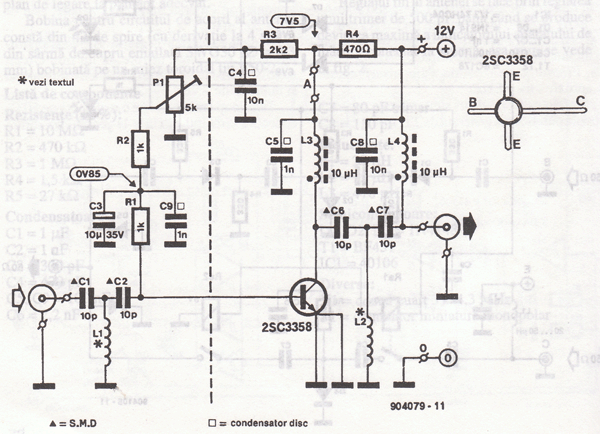
This UHF wideband amplifier (Ultra High Frequency amplifier) provides a total gain of 10 to 15 dB in the frequency range of 400 to 850 MHz, making it suitable for areas with weak TV signals. For optimal performance, the component pins must be cut as short as possible. The capacitors C1, C2, C6, and C7 are surface-mounted devices (SMD). The UHF antenna TV amplifier should be housed within a metal enclosure and positioned close to the TV antenna. A simple 12V stabilized power supply is required. The amplifier can be connected directly to the power supply through a coaxial cable from the TV antenna, but a 10 to 100 µH coil must be included in the power line. The TV set will connect to the UHF amplifier via a small coupling capacitor.
The UHF wideband amplifier is designed to enhance weak television signals in the specified frequency range. Its architecture typically includes a series of low-noise amplifying stages to achieve the specified gain while maintaining signal integrity. The choice of SMD capacitors (C1, C2, C6, and C7) is crucial, as these components help filter out unwanted frequencies and stabilize the amplifier's performance.
The metal enclosure serves multiple purposes: it protects sensitive electronic components from external interference and environmental factors, and it helps to minimize electromagnetic interference (EMI) that could degrade the amplifier's performance. Proper grounding of the enclosure is essential to ensure effective shielding.
The power supply, rated at 12V, should be stabilized to prevent voltage fluctuations that could affect the amplifier's performance. The inclusion of a 10 to 100 µH coil on the power line is a critical design feature; it acts as an inductor that filters out high-frequency noise from the power supply, ensuring that only the desired signals are amplified.
Connecting the amplifier to the TV set through a coupling capacitor is a common practice in RF design. This capacitor allows AC signals to pass while blocking DC components, preventing potential damage to the TV’s circuitry. The amplifier should be carefully calibrated to optimize the gain and ensure that the output signal is within the acceptable range for the connected TV.
In summary, the design and implementation of a UHF wideband amplifier involve careful consideration of component selection, housing, power supply design, and signal coupling techniques to achieve reliable performance in enhancing weak TV signals.This UHF wideband amplifier(Ultra High Frequency amplifier) has a total gain of 10 to 15 dB in the 400 850 MHz domain frequency so it can be used where the tv signal is weak. For this UHF antenna tv amplifier to work correctly you need to cut the components pins as short as possible.
C1, C2, C6, C7 are SMD type ( surface mounted ). This antenn a tv amplifier or uhf wideband amplifier need to be build inside of a metal box and then connected close to the tv antenna. The power supply is a simple 12V stabilized source. The antenna tv amplifier can be connected directly to the power supply thru coaxial cable of the tv antenna but you need a 10 100uH coil on the alimentation line.
The tv set will be connected to the uhf amplifier thru a small coupling capacitor. 🔗 External reference
The UHF wideband amplifier is designed to enhance weak television signals in the specified frequency range. Its architecture typically includes a series of low-noise amplifying stages to achieve the specified gain while maintaining signal integrity. The choice of SMD capacitors (C1, C2, C6, and C7) is crucial, as these components help filter out unwanted frequencies and stabilize the amplifier's performance.
The metal enclosure serves multiple purposes: it protects sensitive electronic components from external interference and environmental factors, and it helps to minimize electromagnetic interference (EMI) that could degrade the amplifier's performance. Proper grounding of the enclosure is essential to ensure effective shielding.
The power supply, rated at 12V, should be stabilized to prevent voltage fluctuations that could affect the amplifier's performance. The inclusion of a 10 to 100 µH coil on the power line is a critical design feature; it acts as an inductor that filters out high-frequency noise from the power supply, ensuring that only the desired signals are amplified.
Connecting the amplifier to the TV set through a coupling capacitor is a common practice in RF design. This capacitor allows AC signals to pass while blocking DC components, preventing potential damage to the TV’s circuitry. The amplifier should be carefully calibrated to optimize the gain and ensure that the output signal is within the acceptable range for the connected TV.
In summary, the design and implementation of a UHF wideband amplifier involve careful consideration of component selection, housing, power supply design, and signal coupling techniques to achieve reliable performance in enhancing weak TV signals.This UHF wideband amplifier(Ultra High Frequency amplifier) has a total gain of 10 to 15 dB in the 400 850 MHz domain frequency so it can be used where the tv signal is weak. For this UHF antenna tv amplifier to work correctly you need to cut the components pins as short as possible.
C1, C2, C6, C7 are SMD type ( surface mounted ). This antenn a tv amplifier or uhf wideband amplifier need to be build inside of a metal box and then connected close to the tv antenna. The power supply is a simple 12V stabilized source. The antenna tv amplifier can be connected directly to the power supply thru coaxial cable of the tv antenna but you need a 10 100uH coil on the alimentation line.
The tv set will be connected to the uhf amplifier thru a small coupling capacitor. 🔗 External reference
